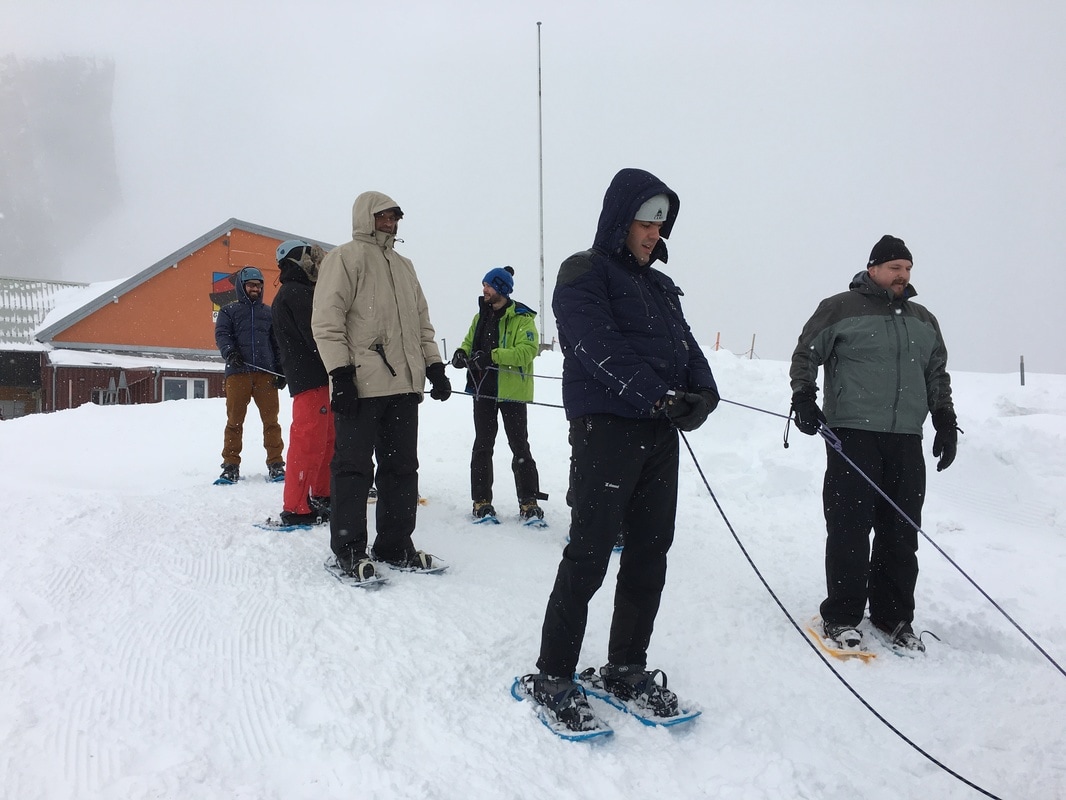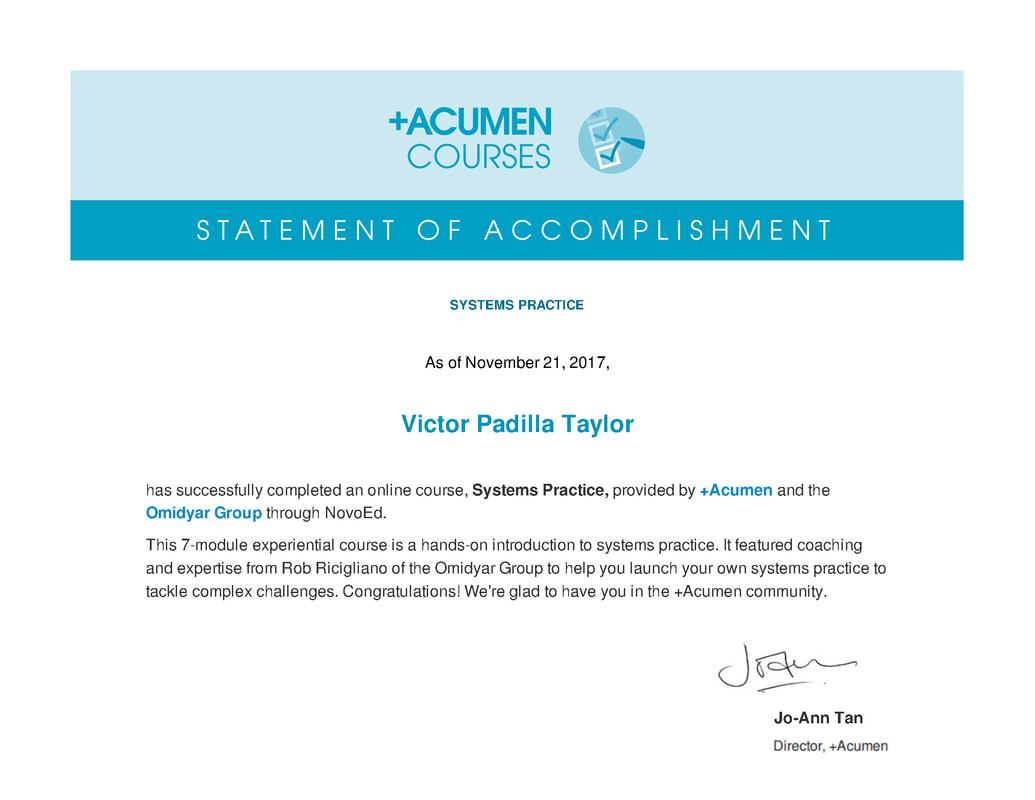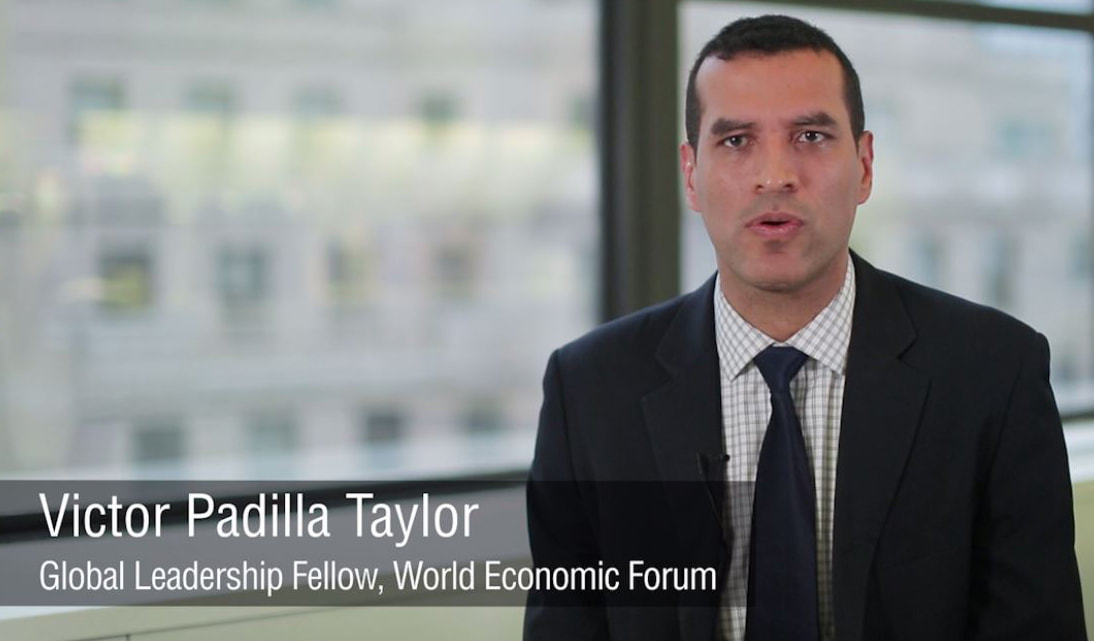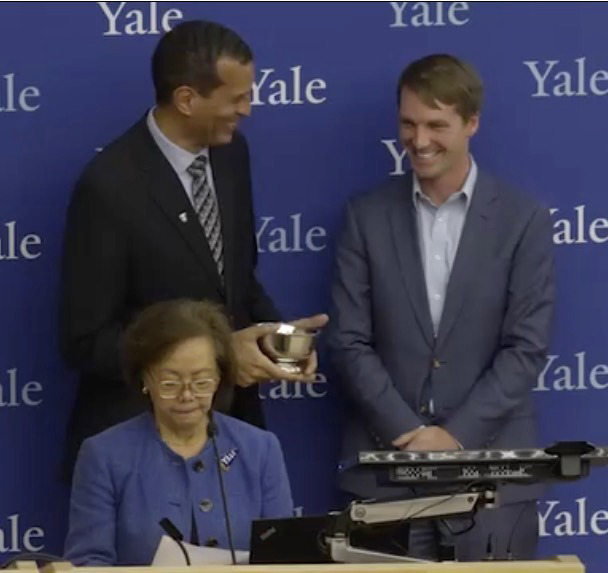There is nothing more practical than good theory
|
Opposition is not an uncommon situation to be found in all areas of public life. But I see every day in the news the intensification of battles in the world. Systems practice could be used to find new ways to navigate these turbulent times towards common social goals.
The recent history of the world had given me hope in the actions of global leaders guiding society towards a peaceful convergence of thought, actions and goals. The Millenium Development Goals, and now the Sustainable Development Goals, are good examples of this. We all want more opportunities and agency for our lives, and these positive goals and the actions of leaders promised to guide us there. But formidable forces, both operating openly and behind the scenes, are creating events and the constant remapping of global systems in a way that limits our collective capacity to reach agreements. It feels that reaching a destination where we can find more resilience, more education, more health and less poverty for all is only a dream. Systems practice can return some agency to us. A renowned professor in this field that guided Global Leadership Fellows on this methodology said: systems practice is a new type of technology and architecture of thought that can produce the key insights to guide our navigation through an increasingly connected, complex and chaotic world. Systems practice, as a new modern filing system, stands against the reductionist views of the world where problems stay solved once a solution has been found for the first time. Systems practitioners know better: they are able to recognize the common occurrence of unintended consequences that proves that keeping our conversations open after applying traditional fixes to our problems is a necessity. I particularly liked the illustration offered around this topic of leaders as ‘circular’ thinkers. This illustration has challenged my own thinking and has prompted to depart from a mindset acquired after many years of training as an engineer. Once engineers learn equations and variables to control in physical and chemical systems, they expect outputs to be produced forever if those systems are provided with the right kind of inputs and controls. Discovering that this is not the way things work for social systems is both refreshing and enlightening. Intuitively, I knew this, and before I found myself conflicted inside. Now learning systems mapping techniques has helped me to understand this reality and has given me more hope and the confidence to lead in these turbulent and modern times. The learnings from systems practice also enhanced my trust in evidence-based thinking to solve our global problems. I honestly resent and fear at the same time the rising power of false narratives that have overtaken our collective thinking by brute force. Social media has helped these untruths to gain strength, for it only takes a few words on Twitter or Facebook and virtual bots to make these false narratives viral and mainstream. Systems practice is good practice for true leadership because it provides a more realistic 3D view of truth. Systems practice supports evidence-based storytelling. This practice gives me depth to discover upstream causes for the downstream outputs of a system, while also giving me the liberty to expose my assumptions, fight my own biases and discover second order forces in the systems I intervene. The theory of change supported by systems practice is encouraging. It is not about mission accomplished, but about creating healthy systems. It is not just about problems, but about recognizing patterns. It is not about planning and control, but about our capacity to adapt. The systems practice methodology creates space for discovery and disclosure in a world where so much despair and distrust exists. Feedback finds its rightful place beyond interpersonal and group dynamics as we recognize the existence of interconnected loops between forces in a system. We must recognize this if we are to truly understand a system, its present outcomes and its future possibilities. Change implemented through regular action, growing care and increased knowledge will be more sustainable and impactful. And decision rules must stop being mostly opportunistic and start giving people a sense of direction and hope. My work at the World Economic Forum has already benefitted from this training on systems practice. I am already using the tools to discuss with my partners the implications of new technologies in transportation poverty (poverty created by lack of transport access), or to explain the importance of establishing new processes of innovation in the humanitarian community. Combined with design thinking skills, systems practice becomes a powerful, creative and inclusive exercise for the communities I manage. I can be an active contributor that catalyzes rich conversations, prompts the right kind of questions and promotes consistent engagement from those who hold the required expertise and the power to create compelling change. One of my favorite mandates reinforced during my Global Leadership Fellowship is taking perspectives from others. In support of this mandate, systems practice provides me with dynamic boxes inside which I can place these perspectives for the good collective use. Systems practice also invites me to make my listening to others more open and less controlling. After all, control is futile in systems leadership because a solution today can easily become a problem tomorrow. Therefore, I am now more open to accepting that whatever brought me ‘here’ as an engineer, etc., may not be valid anymore to take me ‘there’ as a global leader. Systems practice is a great tool and proxy for leadership in our VUCA (volatile, uncertain, complex and ambiguous) times. When most voices today call for friction and either/or positions, systems practice can set us free from the prison of our own cognitive frameworks. This training will be truly useful in my leadership toolkit when guiding others in this era of fractured narratives and more intense battles for the minds of men. Below is a sample system map created for the question: How might we make investing in humanitarian innovation a mainstream activity for public and private actors seeking to build together social resilience ahead of humanitarian crises?
1 Comment
Members of the network of Global Future Councils meet annually in the United Arab Emirates, and virtually several times a year to monitor trends, identify global risks, discuss ideas and explore interconnections between issues.
(Gemmi Pass, Switzerland) Reaching the summit at GEMMI was an indulgence, an act of rebellion, and extreme political act. While there, I was able to reflect about my own identity as a leader along my peers from the Global Leadership Fellowship Programme. What a privilege! And yes, reflection nowadays is a political act that is much need in our world. The mountains, the snow storms, the silent walks and the group exercises: all things provided me with valuable opportunities to intensely reflect on both my personal and group identities.  Running exercises during GEMMI with people I care much about, and playing together ‘in the arena’ under uncommon circumstances that broke down a few, allowed us to abandon the type of violence that politeness causes in many groups. This unhelpful politeness impedes the joint experimentation on how to express our full range of emotions with the proper amount of energy. Particularly, I tend to exert too much of this energy, and many times I need to remind myself of not overreacting. So, while honoring my own experience, we came together to share this safe space and a deep sense of freedom that provided us with a glimpse to more real group interactions, where our stories as global leaders became demystified. GEMMI was indeed a place where you can prove that leading others and self-awareness is a contact sport. I was relieved to find out that other members of my cohort are in the same path as mine. Many of us want to ‘get high’, or do ground-breaking work. We are impatient about it, and we are seeking this experience with urgency. We are restless and desiring the autonomy and ownership for this type of work that we think can be more impactful. Salary conditions are important, but only as a baseline. We leave or stay in our jobs not because of our current conditions or the past, but because of our future prospects. Emotions matter. At GEMMI I found out again that this statement is true even when you share your life with people from different cultures than yours. Or, maybe it is in these situations that emotions matter the most. Our feelings often have layers that usually hide the truth about the impact of our interactions. So, in our safe space in the mountains, we practiced how to peel down these emotional layers to separate the modes of communications that are helpful from those that are unhelpful. For example, ‘feeling frustrated’ turned out to be an unhelpful phrase to use when disclosing emotions, or when providing feedback to others. At GEMMI, my multi-cultural cohort used experimentation in real life human interactions as a key rule of engagement. These interactions were not like those well-contained simulations where you expect to suffer some ‘gotcha moments’. Our interactions were something else. Our coaches facilitated multiple 1-on-1s and group-think exercises to expand our emotional intelligence capacities. And we did the rest and extracted so much learning. In my case, curiosity proved to be the greatest antidote to reduce the natural tensions that were created. Curiosity proved helpful. Unhelpful behaviors that I tried to stop were: to assume my usual roles as a manner of ‘surviving’ my group interactions; to mindfully take the sidelines in group discussions to let others take control; and, to let myself be bored with topics not so relevant to me. The invitation from our coaches to actively engage with others with a ‘now and here’ attitude did result an act of generosity for others. So I practiced how to use my space and how to be present without overreaching or disempowering others. This constant attention to our surroundings is not an easy thing to hold. It can be stressful to us sometimes and it definitely takes a toll over our stamina. Yet I learned, or rather remembered from my Basketball years, that practice makes perfect. Truly engaging with others while receiving or giving feedback was a gift to our group, even if many times these were hard things to do. It is tough to receive feedback, especially when it is somewhat unhelpful. Yet without enough stress, learning stops. Each of us has that sweet spot to find. We only need to be mindful of our personal limits, because too much of it can also dampen learning. The final lesson from GEMMI, as an experience helping me to build my personal theory of interpersonal and group dynamics, was realizing the importance of taking the space you are given in life. When I did not own my space, others occupied it and filled it with assumptions of my motives. In my particular case, since I was given feedback of my strong presence in the group, I noticed that others would interpret my reservations to guide with apprehension, distrust and even fear. My plan to yield my space to others while trying to be a team player was misunderstood and negatively viewed. In the past, I have feared to consume too much airtime in group settings or to be seen as patronizing when leading others. After receiving this Johari’s window feedback, I have found a reason to continue seeking how to regulate myself between the extremes of forcing my leadership and abandoning it. My coach even told me that it was always better to fail on the side of using your leadership. I am called to speak up while empowering others. This is in consonance with my past life story, which I also reviewed with my coach. Intentionally exercising my principled leadership giving a premium to active listening does not mean to be quiet or passive. And it surely does not mean to abandon the arena. I can, in fact, speak up and simultaneously give to others the power of the last word, the power to call their shots. But it takes practice. Experimentation, not perfection, will produce the fluidity that I long for my personal leadership. If I want to improve in using, managing, identifying and understanding emotions, I must be willing to fail along the way. In conclusion, making sense of what happened at GEMMI is easier when I demystify the experience of it. Personal reflections do not need to happen exclusively in such high places. My everyday interactions can make up for an arena where my willingness to experiment and learn with others can bring about the needed insights for my career. Practice will make perfect, or not. Finding and holding ground in these everyday spaces both in my workplace and personal life will surely have the potential to increase my leadership impact. Transformation maps (TMs) collectively are a unique knowledge platform uncovering the transformations that are reshaping our world. These maps seamlessly integrate via TopLink a curation of the the latest thinking of top leaders and experts in 120+ insight areas.
They also provide visibility into weak signals in complex systems by exposing feedback loops and critical connectors using advanced network analytics. Global, regional and industry issues can be easily analized via the connections represented with these instantly available and updated source of knowledge. Knowledge is relevant and evidence-based decision making is still possible when solving real-world problems. Try TopLink to generate your own insight briefing.
In June 2016, the World Economic Forum issued a document called "Systems Leadership and Platform Engagement Opportunities". The document was written to promote our aspiration to use a systemic approach while working to close the many gaps that exist in global systems today from trade to long-term investment, from healthcare to food security, or from energy to natural resource security and the environment. After my training on systems practice by the Omidyar Network, I will be attempting to merge the Forum's aspiration with the mindsets, processes and tools that I learned. What follows is an initial reflection on trade supported by its corresponding systems map.
After pressing Start, click the three dots (•••) in the middle of the screen to hide/show texts
See this systemic reflection in full screen here Established in 2007 as the foremost global gathering on science, technology and innovation, the Annual Meeting of the New Champions convenes the next generation of fast-growing enterprises shaping the future of business and society, and leaders from major multinationals as well as government, media, academia and civil society. The hosting city, Tianjin, in the People’s Republic of China, became part of the global community of innovation by convening more than 1500 participants from 90 countries for a true global experience addressing today’s unprecedented set of intertwined global challenges – economic, political, societal and environmental.
CLICK HERE TO WATCH A VIDEO ABOUT THIS IMPACTFUL PARTNERSHIP
The Logistics Emergency Team (LET) unites the capacity and resources of the logistics industry with the expertise of the humanitarian community to improve emergency response to large scale natural disasters. First facilitated by the World Economic Forum in 2005, it is the first partnership of its kind, and formalizes cooperation between the private and public sector. Image source: GettyImagesNews To be effective in dealing with a major, multifaceted problem such as a humanitarian disaster, you need an advanced set of skills and a trained mindset to think systemically and creatively. In my role at the World Economic Forum supporting the Logistics Emergency Teams (LET), I have found that my time as a student at the Yale School of Management provided me with the knowledge and skills that I need for such a complex undertaking. According to the United Nations, last year there were 128.6 million people affected by conflict, violence, and disaster in the world. Among those numbers, 96.9 million required humanitarian assistance–three times more than 10 years ago. This means that global humanitarian financing has surged to unprecedented levels, or $22 billion a year, raising the need for more efficiency and accountability in how this assistance is provided. One of my courses during my time at SOM was Supply Chain Management. Professor Sang Kim taught us how to better manage the flows of materials and information among all stakeholders involved in fulfilling the needs of end users like beneficiaries of humanitarian assistance. When you consider that between 60 and 80% of emergency response spending is related to logistics you can easily understand how important it is to master strategic- and operational-level supply chain problems and quantitative tools. Another course that provided me with key insights for my current work was Managing Social Enterprises. Impact measurement is a central concern among stakeholders in the humanitarian community. I learned from Professor Kate Cooney how to establish assessment frameworks with indicators that validate our social efforts both for the short and long term (this is called “theory of change”). I also learned about how to prioritize competing stakeholder claims, going beyond just identifying each of them and understanding the dynamics inherent to each relationship (this is called “stakeholder theory”). While deploying assistance to populations in need, you often find yourself mapping key players in your work at the global, country, and individual levels. When disaster strikes, you can face millions of affected people–hundreds of thousands of whom are displaced–and hundreds of organizations coming from all around the world to assist in response. Understanding the disparate needs of all involved—and how to manage them—is crucial. Take one example: Super Typhoon Haiyan (also called Yolanda), the strongest recorded storm, hit the Philippines in 2013. It caused $2.86 billion in damages to the region and left 1.9 million people homeless and more than 6 million displaced. In disasters like this, how can the humanitarian community respond effectively? How do you restore the broken supply chains and swiftly close the gaps while coordinating with so many different parties at the global and local level? As l learned during my class Global Challenges with Professor David Bach, crises of this magnitude require the close collaboration of business and society and personal, sustained efforts to overcome unique cultural challenges and to combine the efforts of multi-stakeholder ecosystems crippled with vulnerability. I am glad to have been thoroughly informed of all these approaches during my time at Yale SOM. I learned about profit, planet, and people during my training in school. Now I feel fully capable of catalyzing tangible action on the ground and serving as a bridge between public and private sector players during collaborative initiatives that surpass the laws of competition when disaster strikes. This has become my passion, and I realize how meaningful my choice of business school was in preparing me to help save lives around the world. I wish everyone else reading these notes the same fortune. This blog entry was first posted at som.yale.edu By Wolfgang Lehmacher and Victor Padilla-Taylor, World Economic Forum, first posted in businessinsider.com
You may not be alone these days if you believe that Donald Trump will build a wall between the US and Mexico as President of the United States. But rather than paying for it, we could see Mexico in the future breaking down a separate wall that is already creating frictions with the US: the wall of invisible trade barriers. Two former Presidents of the Latin American nation, Vicente Fox and Felipe Calderon, said in March that there is “ no way ” Mexico would ever pay for such a wall. “We are not going to pay any single cent for such a stupid wall!” Mr. Calderón said. Since Mr. Trump has also rallied against the North American Free Trade Agreement (Nafta) – calling it a “ disaster – it doesn’t take a rocket scientist to figure out how Mexico’s government would feel about any change to the 22-years old trade deal. Instead of only resorting to defensive rhetoric, today Mexico can play offense when it comes to its border with the US. The truth is that in terms of its manufacturing and exports to the US, Mexico is still far from achieving its full potential, despite Nafta. Interestingly, the reason for this deficit is much less the often zealous US customs and border agency, but Mexico’s own non-tariff barriers, bottlenecks and shortcomings in trade. More than half of the labour cost advantage that Mexico has over the US is estimated to be lost because of supply chain barriers. Therefore, Mexico could unilaterally take a number of ‘wall-tumbling’ steps which would all but guarantee higher exports of key products to the US. Take for example the medical devices industry, a sector which exported $7.7 billion worldwide in 2014 and which sells mainly to the US. Just in this niche sector, removing specific non-tariff barriers throughout the end-to-end value chain could generate up to $1.5 billion in economic growth per year for Mexico. For this and other industries close to the ‘tipping point’ of competitiveness in the global market, Mexico could reinvigorate its economic engine by supporting actions in four specific areas:
Trump’s wall is said to cost between $8 to $300 billion depending on which side of the argument you listen to when searching for the expense of the measure. Surely much more value can be extracted from tumbling down barriers in trade, instead of doubling-down on this temporal narrative for an electorate looking for leadership. Wolfgang Lehmacher is head of supply chain and transport industry at the World Economic Forum and Victor Padilla-Taylor is community lead, supply chain and transport at the World Economic Forum |
AuthorVictor Padilla-Taylor is Director of Networks at the Tsai Center for Innovative Thinking at Yale. He was the 2021 recipient of the Linda Lorimer Award for Distinguished Service, conferred by Yale’s president on staff who have demonstrated their commitment to innovative thinking and the educational and research missions of the university. He also serves as board leader at Global Consortium for Entrepreneurship Centers, Long Wharf Theatre, Yale SOM Alumni Advisory Board, and Saint Thomas More Chapel and Center at Yale University. For his accomplishments as alumni volunteer, he received the 2023 Yale Alumni Leadership Award for his service and innovative leadership as nominated and selected by alumni relations staff members. AlpsBoundA global soul with MBA experience from GNAM schools around the world Archives
October 2023
Categories
All
|



 RSS Feed
RSS Feed